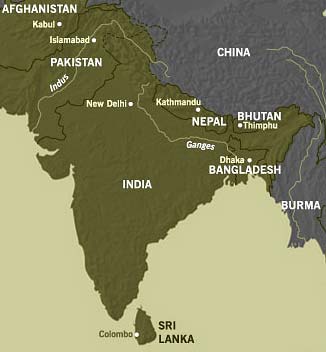|
The Cholas came to power in the late 9th century, and until the late 13th century, they ruled most of South India, Sri Lanka, the Maldive Islands, and even parts of the Indonesian island of Java from their homeland near Thanjavur (Tanjore) on the southeastern coast of what is now Tamil Nadu, India.
It was founded by Vijalaya, who captured Tanjore in 850 AD. The greatest among the Chola rulers were the imperialists Rajaraja (985-1014 AD) and his son Rajendra I (1012 1044 AD). These rulers adopted a maritime policy allowing their expansionist arm to reach far longer than pure land expansion would allow, Maldives and Sri Lanka. Under Rajaraja the Chola kingdom grew into an extensive and well knit empire. The empire maintained diplomatic ties with countries as distant as Burma (Myanmar), China, and Malaysia across the Indian Ocean.
Now the Chola rulers are remembered most for what they created rather than for what they conquered. Chola rulers were active patrons of the arts, and during their reign, poetry, drama, music, and dance flourished. They also constructed enormous stone temple complexes decorated inside and out with painted and sculpted representations of the Hindu gods. Some of the best-known artistic remains from this time period are the
South Indian bronze statues that were commissioned for each temple as well as the magnificent Dravidian temples of south India.
|

Click here to learn more about the
Pala dynasty in Bihar and Bengal.
|
While the
stone sculptures and the inner sanctum image empowering the temple remained immovable, changing religious concepts during the 10th century demanded that the deities take part in a variety of public roles similar to those of a human monarch. As a result, large bronze images were created to be carried outside the temple to participate in daily rituals, processions, and temple festivals. The round lugs and holes found on the bases of many of these sculptures are for the poles that were used to carry the heavy images. Admired for the sensuous depiction of the figure and the detailed treatment of their clothing and jewelry, Chola-period bronzes were created using the
lost wax technique.
Although bronze casting has a long history in South India, a much larger and a much greater number of bronze sculptures were cast during the Chola period than before, further attesting to the importance of bronze sculpture during this period. The beautiful Nataraja figure was first conceived during the Chola empire. It should be noted that when in worship, these images are covered in silk cloths, garlands, and jewels, and would not appear as they do outside a religious context. Decorating the
bronzes in this way is a tradition at least a thousand years old as such decorations are referred to in 10th-century Chola inscriptions.
During this period, several regional languages branched off from Sanskrit. Marthi evolved from the local Prakrit, while Tamil, Telugu and Kannada stemmed from a Dravidian root, but owed much to Sanskrit. Under the Cholas, the Dravidian style of temple architecture, exclusive to the south, attained its most magnificent form. An example is the Brihadiswara temple at Tanjore, built by Rajendra I. |
|